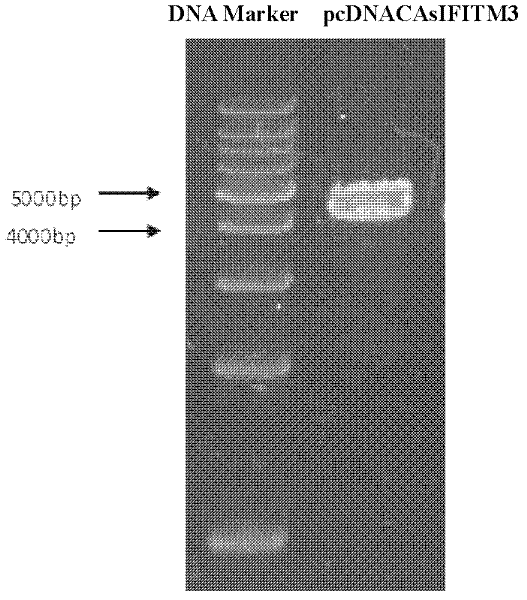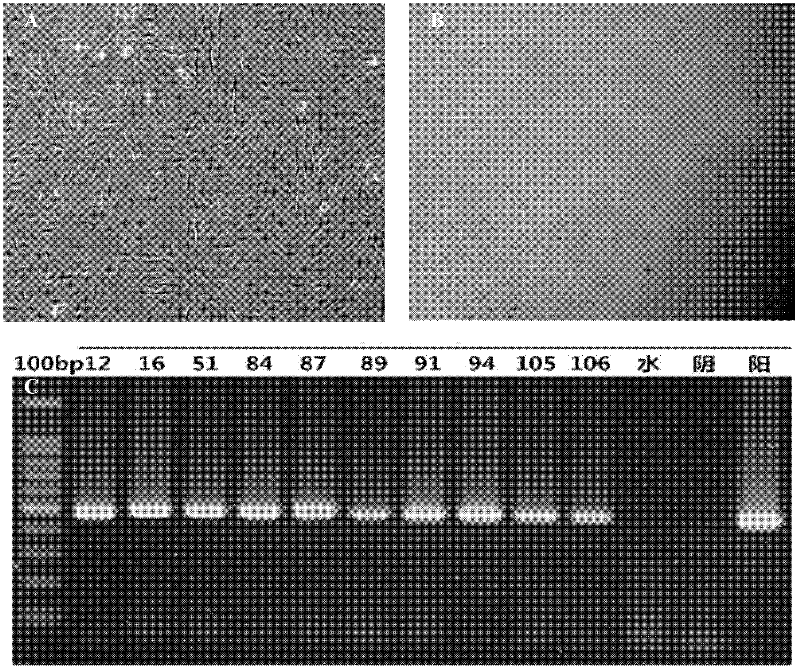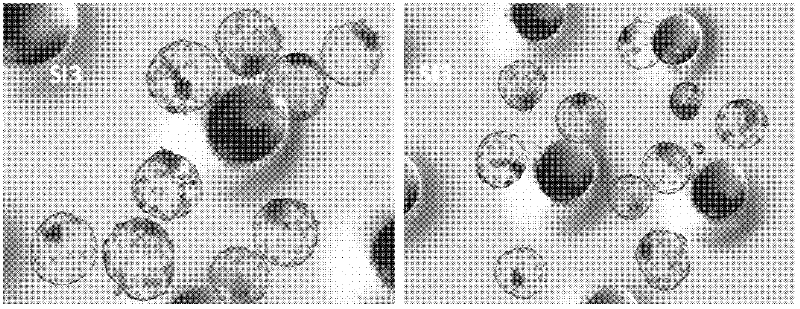Breeding method for transgenic pigs expressing sIFITM3 genes
A technology of transgenic pigs and breeding methods, which is applied in the field of biomedical technology and disease-resistant breeding, can solve the problems of low selection efficiency, long breeding cycle, and inability to meet the needs of disease-resistant varieties, and achieve the effect of easy method and simple operation
- Summary
- Abstract
- Description
- Claims
- Application Information
AI Technical Summary
Problems solved by technology
Method used
Image
Examples
Embodiment 1
[0034] A method for preparing porcine interferon-induced transmembrane 3 gene (interferon induced transmembrane 3, IFITM3) for preparing transgenic pigs, the steps of which are:
[0035] 1. Acquisition of porcine interferon-induced transmembrane 3 gene:
[0036] Referring to the GenBank HQ641403.1 IFITM3 gene sequence, a pair of primers were designed, RNA was extracted from porcine lymph node tissue, and sIFITM3 gene was amplified by RT-PCR. The primer sequences are as follows:
[0037] sIFITM 3F: 5'-tttgaattccaccatgaactgcgct-3'
[0038] sIFITM 3R: 5'-tttctcgagtcagatcatcgga-3'
[0039] A two-step method was used to amplify. Firstly, cDNA was obtained by reverse transcription, and then used as a template for PCR amplification. The reaction system was: 0.25 μL template plasmid, 5 μL 10×LA buffer, 1.0 μL each of pTRIM25F and pTRIM25R primers (final Concentration is 10pmol / L), LA enzyme 0.25μL, dNTPS 1.0μL, add ddH2O to 50μL. Act at 94°C for 3 minutes; then act at 94°C for 30 s...
Embodiment 2
[0043] A kind of cultivation for expressing the transgenic pig of pig IFITM3 gene, its steps are:
[0044] 1. Construction of large white pig fibroblast cell line stably expressing sIFITM3 gene:
[0045] 1.1 Vector linearization:
[0046] The vector plasmid pcDNACAsIITM3 was extracted and linearized with AccI, then precipitated with ethanol and dissolved in sterile water.
[0047] 1.2 Lipofectamine transfection:
[0048] According to conventional methods ("Animal Cell Culture Technology and Application", edited by Wang Jie, Beijing: Chemical Industry Press, 2004), the fibroblasts used as nuclear donor cells---large white fetal pigs were isolated and prepared. Fetuses were isolated by removing the fetal membranes, washed 3 times in phosphate buffered saline containing antibiotics, and then the limbs, head and viscera were removed. The tissue was mechanically ground with small scissors, and then digested with trypsin-EDTA (ethylenediaminetetraacetic acid) at 37°C for 20 minut...
PUM
| Property | Measurement | Unit |
|---|---|---|
| Outer diameter | aaaaa | aaaaa |
Abstract
Description
Claims
Application Information
 Login to View More
Login to View More - R&D
- Intellectual Property
- Life Sciences
- Materials
- Tech Scout
- Unparalleled Data Quality
- Higher Quality Content
- 60% Fewer Hallucinations
Browse by: Latest US Patents, China's latest patents, Technical Efficacy Thesaurus, Application Domain, Technology Topic, Popular Technical Reports.
© 2025 PatSnap. All rights reserved.Legal|Privacy policy|Modern Slavery Act Transparency Statement|Sitemap|About US| Contact US: help@patsnap.com



